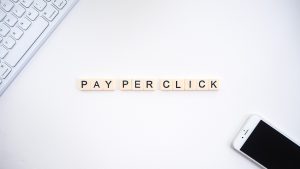
PPC is a very lucrative model of internet marketing where a lot of money is constantly trading hands: from users to PPC advertisers and from advertising back to PPC users. If you are just starting out, and spending hundreds of dollars a day on PPC advertising, the amount of conflicting information regarding how you can optimize your campaigns can certainly be confusing.
Many sources list different types of PPC strategies online, but it’s hard to tell what works best — furthermore, who’s to say what works best or is just okay? It all depends. That is why we have decided to come up with a three-part series approaching this question in different ways: Addressing some of the most common PPC mistakes that certainly can and should be avoided, thus saving you hundreds of dollars every month while simultaneously getting you consistently better results.
So let’s begin.
1. Try to avoid using broad match keywords
When it comes to search engine marketing, there are several different keyword matching modes that are available to you when you are creating a new campaign, they are:
- Broad match
- Phrase match
- Exact match
Broad match is the keyword type that gives Google the greatest flexibility in choosing who to show your ad. Broad match not only sends a lot of irrelevant traffic your way, but also results in a poor ad rating for your ad because people looking for a different service may visit your website, and when they find that you do not provide the service they came looking for, they leave immediately, resulting in what is known as a “Bounce” — which damages your ad’s rating.
The best approach would be to target the audience that you are looking as carefully as possible. This will save you a lot of unnecessary clicks from irrelevant traffic, hence saving you money, and it will also send the right people to your website.
2. Avoid using combined search and display campaigns
When you create a new campaign for search engine marketing, you have an option to either target only the search network, only the display network, or both. It’s best that you only choose one of the two, but definitely not both. To understand why, let’s first take a moment to study the difference between search ads, and display ads.
Search ads are shown to users who are actively searching for a specific product or service, whereas display ads are shown to people who may not really be looking for something specific. This is also the reason why the PPC model for search ads is more expensive than for display ads.
So, when you merge search and display campaigns, it becomes difficult for you to study and derive the right analytics and conclusions from it.
3. Write a few different iterations of ads for every ad group
All it takes to get a campaign up and running is one ad, which is probably what most people tend to do because it’s quicker that way. But with just one ad you can’t compare strategies or even measure the performance of your current ad as you have nothing to compare it with.
Having just one ad also impacts your ad rating, and with a lower ad rating, someone else’s ad with more variations will be given priority over yours, and you even end up having to pay comparatively more if you want your ad to be shown near the top of the page.
No, the ads don’t have to be radically different, just a few changes in the headline and description will do — but having a variation greatly supports your ad campaign’s performance.
Just remember to check “Don’t optimize: Rotate Ads evenly” if you want to track the performance of your ads to figure out what works and what doesn’t, otherwise, using “Optimise: Prefer best performing ads” you can let AdWords decide what works best automatically and display that ad more frequently.
Another important point to remember that I will remind you of in every post is the fact that you must let your ads run for at least two weeks after making any changes to track their performance. Just a day or two, or even seven days is never enough.
So that was Part 1 of “10 common PPC mistakes one should avoid”. Stay tuned for two more parts of this series that will definitely help your PPC ad campaigns to give you a better ROI.



